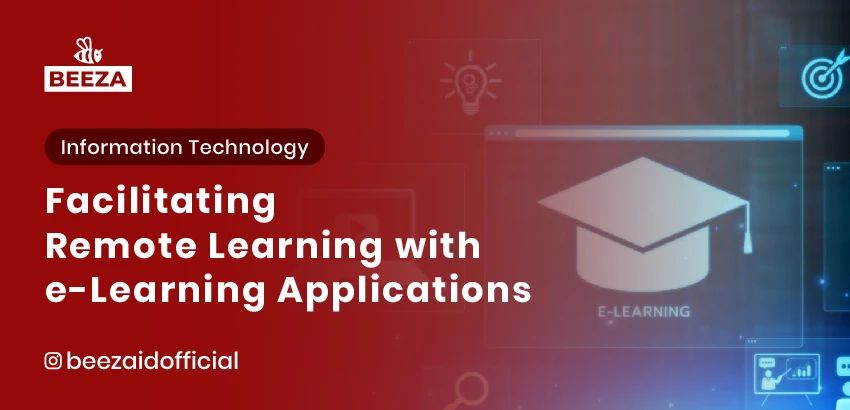
Remote learning has become one of the primary solutions for education in the digital era. As technology advances, eLearning applications offer an efficient way for students and instructors to connect and interact without geographic constraints. However, despite the availability of various eLearning platforms, there are still challenges in creating a secure, efficient, and engaging learning experience.
In this article, we will explore how eLearning applications facilitate remote learning and discuss technological solutions that can address existing challenges.
Why eLearning Applications Are Essential for Remote Learning
eLearning applications play a critical role in supporting remote learning. Here are several reasons why eLearning applications are necessary in this context:
- Accessibility
eLearning applications allow students to access learning materials anytime and anywhere, offering flexibility in their learning journey. - Interactivity
With features such as interactive quizzes, discussion forums, and video conferencing, eLearning applications provide a more engaging and enjoyable learning experience for students. - Learning Efficiency
These platforms make it easier to manage learning materials, assessments, and feedback, streamlining the teaching and learning process. - Organized Storage and Access to Materials
Learning materials can be stored in one organized location, making it easier for students to access and revisit them as needed.
Challenges in Remote Learning
Despite the advantages of eLearning applications, there are several challenges faced in remote learning:
- Limited Internet Access
In some regions, reliable and fast internet access remains an issue, hindering the learning experience for students who rely on a stable internet connection. - Limited Social Interaction
Remote learning reduces face-to-face interaction between students and instructors, which can affect the quality of communication and collaboration. - Data Security and Privacy
With the vast amount of personal data accessed through eLearning applications, it is crucial to ensure these platforms are secure from cyber threats and protect users’ privacy. - Motivation and Self-Discipline
Without direct supervision, students may find it difficult to stay motivated or manage their time effectively, which can impact the quality of their learning.
Technological Solutions to Overcome Challenges
To address these challenges, several technological solutions can be implemented in eLearning applications:
- Cloud Hosting for Optimal Performance
Using cloud services to host eLearning applications ensures that the platform can be accessed anytime and anywhere without system disruptions. Cloud hosting also reduces costs and improves scalability. - Biometric Technology for Security
Biometric verification, such as facial recognition or fingerprint scanning, can enhance the security of eLearning platforms. This ensures that only authorized users can access learning materials, protecting personal data from potential threats. - Video Conferencing and Online Collaboration
Video conferencing and online collaboration tools allow for real-time interaction between students and instructors, reducing communication barriers in remote learning. These tools also facilitate group discussions, which are important for improving student engagement. - Gamification and Reward Systems
Incorporating gamification elements, such as quizzes or rewards, can boost student motivation to stay engaged and active in the learning process. - AI for Personalized Learning
By leveraging artificial intelligence (AI), eLearning applications can offer a more personalized learning experience for each student, tailoring content and learning speed according to individual needs.
Case Study: Remote Learning Transformation at Open University (OU)
Problem
Open University (OU), a leading distance learning institution, faced challenges in providing a secure and efficient remote learning platform. Students often encountered issues with accessing materials, and there were concerns about the security of personal data.
Solution
OU implemented a cloud-based eLearning platform with integrated biometric authentication to ensure secure access. Additionally, the platform incorporated video conferencing features to allow real-time interaction between students and instructors, improving engagement and communication.
Results
- Accessibility improved, with students able to access materials without interruptions.
- Data security was enhanced with biometric authentication, ensuring that only authorized users could access the platform.
- Student satisfaction increased due to a more interactive and personalized learning experience.
Conclusion
eLearning applications play a vital role in supporting remote learning that is secure, efficient, and engaging. By adopting modern technological solutions such as cloud hosting, biometric authentication, and video conferencing, educational institutions can create better learning platforms for students.If you’re looking to improve your remote learning experience , contact us to learn more about customized solutions that meet your needs.